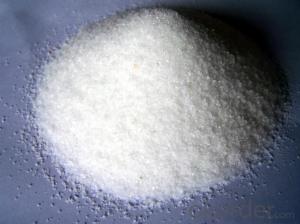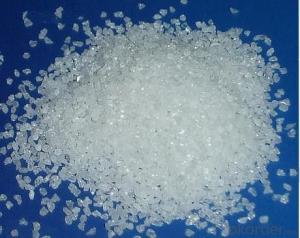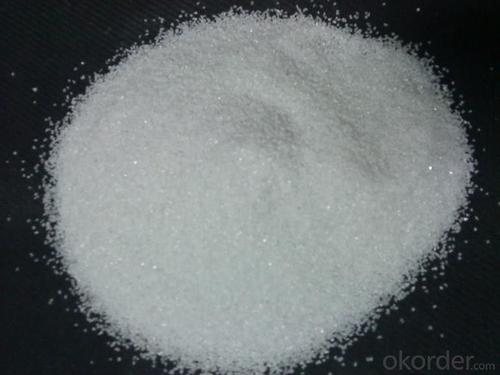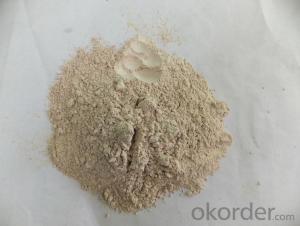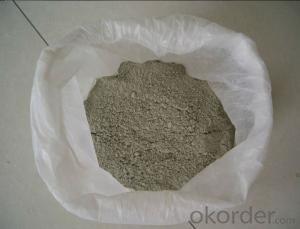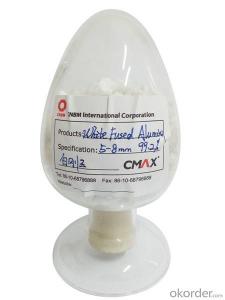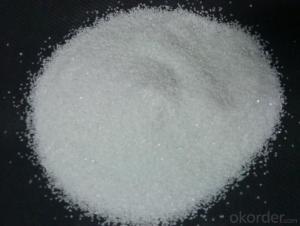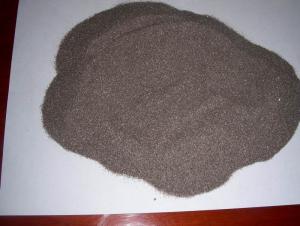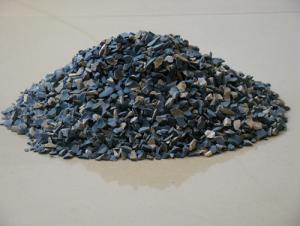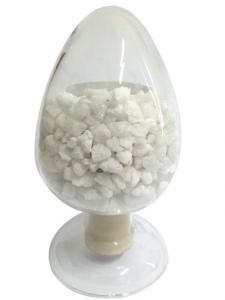Raw Materials for Refractory - White Fused Alumina WF A98.5
- Loading Port:
- Tianjin
- Payment Terms:
- TT OR LC
- Min Order Qty:
- -
- Supply Capability:
- 1000MT m.t./month
OKorder Service Pledge
Quality Product, Order Online Tracking, Timely Delivery
OKorder Financial Service
Credit Rating, Credit Services, Credit Purchasing
You Might Also Like
Specification of white fused alumina
Item | B.D(g/cm3) | Apparent Porosity | Chemical Composition | |||
AL2O3 | Fe2O3 | SiO2 | NaO2 | |||
WFA | 3.7 | 7.8% | 99.2%min | 0.1%max | 0.2%max | 0.3%max |
Packaging & Shipping
In 1MT jumbo bag or as the buyer request.
We ship the cargo in 20' GP containers,each container loads 25MT/20bags.
Application of white fused alumina
1.Light-weight insulating refractories
2.Shaped and unshaped refractories
3.Pre-cast shapes and castables
4.High Alumina Refractory mixes and gunning mixes
- Q: Does anyone know the characteristics of refractory for glass kiln?
- Quartzitic sandstone. Also known as quartzitic sandstone or white gravel. Which is a kind of natural refractory and quartz sandstone bonded by the kaolinite. Who appearance is better to be steel-grey, dense and hard, free of impurities and stripes. Its main crystalline phase is mainly quartz and kaolinite. Which has obvious stratified structure and anisotropism. The refractoriness fluctuation is between 1650~1730 ℃. The expansibility of quartzitic sandstone is different from that of silica?brick, who has maximum coefficient of thermal expansion under temperatures of 700 ~ 800 ℃, and it is most likely to burst at this time. The load softening temperature and the compression strength of calcined quartzitic sandstone have been improved significantly, with small residual expansion, stable volume, better thermal shock resistance, so it is generally to use calcinated quartzitic sandstone as refractories. which has been widely used as sidewall blocks on the small and medium sized furnaces.
- Q: how about the performance of aluminum silicate fire proof thermal insulation?
- aluminum silicate refractory fiber board has following characteristics:1. the structure is more even than natural wood. it avoids rot, moth-eaten and other problems, 2. fiber board has small expansion and contraction, which is easy to be processed. 3. its smooth surface is easy to paste a variety of finishings and you can make furniture more beautiful. Decorative wood-based panel is to embellish their homes. I hope it is useful to you!
- Q: How many hours of the fire endurance time of the rock wool laminboard?
- Hello! Manager! The fire endurance of the rock wool laminboard is generally two hours. If you need the fire?rating of the rock wool laminboard, then I recommend you to buy it from the standard factory ! The one with higher fire rating can use polyurethane edge banding rock wool board and handmade glass magnesium rock wool laminboard.
- Q: Which refractory material is better in China? Industrial furnace, mainly in non-ferrous industries, glass kiln, cement kiln business.
- Such solid nano microporous insulation material with nano inorganic refractory powder special, with a huge surface area, nano particles contact between the minimum point contact point contact thermal resistance is very large, the heat conduction effect of the material becomes very small, resulting in heat conduction coefficient of solid such nano porous insulation materials very small; nano pores formed of nanoparticles, the average size of 20 nm, and the average free path of molecular thermal motion at room temperature under static air is 60 nm, thus locking the air molecules in powder within nano pores, making the micro convection heat transfer effect between the stationary air molecules disappeared. The room temperature thermal conductivity of solid such nano microporous insulation material is lower than the static air; at high temperature, the main effect of heat transfer heat radiation, Good energy-saving insulation materials with nano microporous infrared additive special, stop at a high temperature and reflected infrared radiation, reduce the heat radiation effect to the lowest point, the radiation heat transfer coefficient of materials under high temperature is reduced to the lowest value.
- Q: I am a manufacturer of refractory materials. I would like to receive some orders from abroad. I would like to know what foreign trade companies in Dalian place foreign orders abroad
- You don't give a cent to this question, no one will answer it
- Q: What thickness is needed of the ultra-thin fireproof paint with a fireproof time of 2.5 hours?
- Fireproof of steel components can adopt outsourcing concrete (or laying bricks method), fireproof coatings, fire prevention board coated and composite structure. Anti-firing plate can be divided into the fire protection lamella thickness plate and thin plate. Fire protection lamella thickness plate is of 20 ~ 50 mm. There are mainly calcium silicate and decayed stone of fire prevention board fire board, main varieties KB board, CF board; Fire sheet thickness is between 6 to 15 mm and the main varieties have short fiber reinforced cement pressure plate, fiber reinforced ordinary calcium silicate board and glass cloth reinforced inorganic plate. I hope you can be satisfied.
- Q: How to choose the material of refractory?
- Long using temperature of aluminum oxide fiber is 1400 ℃, containing chromium aluminum silicate fiber, quartz, high purity aluminum silicate fiber, long-term use of temperature is 1000-1200 ℃ has aluminum silicate refractory fiber according to different raw materials, advanced refractory fiber (such as alumina. Commonly used vitreous aluminum silicate refractory fibre is amorphous, zirconium oxide refractory fibre) using temperature is 1700 ℃ view as >and the best temperature is 1300 ℃. Crystalline refractory fiber are polycrystalline mullite fiber, including ordinary aluminum silicate fiber, alumina and graphite refractory fiber, etc. The use of common refractory fiber temperature is 1150 ℃;>
- Q: How can the furnace be replaced after the gasifier or water wall is replaced with refractory material?
- If there is only a small local, bake according to the overall it is really troublesome, water wall repair point of direct drive estimation problem is not large, the water wall itself is used to slag slag slag principle, can also play the role of refractory materials.
- Q: What is the biggest difference between refractory bricks and clay refractory bricks? Where can I find information on the refractory bricks?
- You can look up knowledge manual of refractory material to find phosphatic material, etc. Xinjiang refractory bricks, castable refractory, refractory material, silicious, corundum and alumina-magnesia: High alumina and clay refractory bricks can be divided into
- Q: I wanna ask about the thermal insulation material fire resistant level?
- The inorganic glass wool, rock wool and foam glass. Organic: The best is the phenolic foam, phenolic foam composite cement layer is level A.
Send your message to us
Raw Materials for Refractory - White Fused Alumina WF A98.5
- Loading Port:
- Tianjin
- Payment Terms:
- TT OR LC
- Min Order Qty:
- -
- Supply Capability:
- 1000MT m.t./month
OKorder Service Pledge
Quality Product, Order Online Tracking, Timely Delivery
OKorder Financial Service
Credit Rating, Credit Services, Credit Purchasing
Similar products
Hot products
Hot Searches
Related keywords

